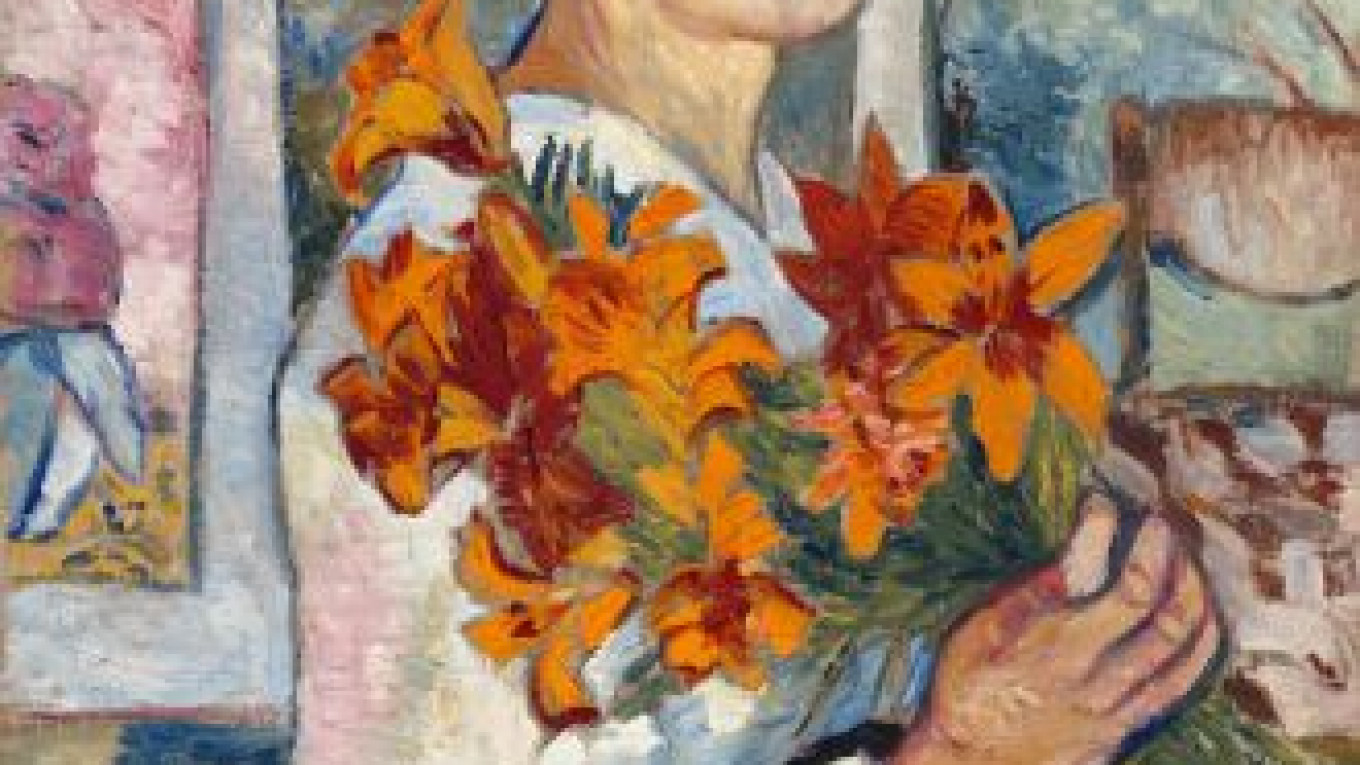Looking back at the famous names of 20th century art, individuals like Kandinsky, Picasso and Franz Marc all spring to mind. While Natalia Goncharova may not be as well recognized, over the course of her career she mingled with many of the big-name artists of the Western European avant-garde.
Goncharova, who died in 1962, left behind a body of work that acts like a sampler platter for the artistic movements that dominated the first half of the last century. The full range of the artist is now on display at the State Tretyakov Gallery on Krymsky Val, where "Natalia Goncharova, Between East and West" has gathered together about 400 of the artist's works from museums throughout the world and showcases her paintings with an impressive level of breadth.
Goncharova's life and work can be divided into fairly distinct periods, as is done in the Tretyakov exhibit. Born in 1881 in Russia, she was one of the founding members of the Der Blaue Reiter group in Munich, which included Franz Marc and fellow Russian Vasily Kandinsky. She then traveled throughout Western Europe, spending time in Geneva and Paris, while mingling with the artistic styles of Pablo Picasso and doing design work for Sergei Diaghilev's ballets russe.
Indeed, the different influences on Goncharova can be seen in her different periods. Her early work uses religious images, and in paintings of Russian peasants from about 1910, she used the broad shaded shapes of pink and teal commonly seen in Marc Chagall. Her later change of styles in Europe show how a vase of flowers can be changed from a cluster of visible brushstrokes reminiscent of Vincent Van Gogh to intensely detailed petals to cubist squares, to a painting of sunflowers done in the 1950s that looks like black flying saucers surrounded by glowing auras of yellow.
But those looking for some sort of trajectory in the artist's work will be disappointed. The exhibit shows how even in one period of paintings, such as the well-known series of Spanish women, Goncharova was picking styles at will, as senoritas alternate between being cartoonish and covered up by realistic black lace. Despite bouncing around between locations and influences, there is a casual consistency to Goncharova's work, as she routinely depicts similar subjects in different countries and at different times. The Russian and religious imagery of the artist's Russian youth also reappears throughout her life, particularly in her theater work. The selection is appropriately sub-titled "between East and West,"rather than "East and then West" as, despite becoming a French citizen and an international star, Goncharova remained a distinctly Russian voice in the tumult of early 20th century art.
"Natalia Goncharova, Between East and West" will be on display until Feb. 16 at the New Tretyakov Gallery at 10 Krymsky Val, metro Oktyabrskaya.
Contact the author at [email protected]
A Message from The Moscow Times:
Dear readers,
We are facing unprecedented challenges. Russia's Prosecutor General's Office has designated The Moscow Times as an "undesirable" organization, criminalizing our work and putting our staff at risk of prosecution. This follows our earlier unjust labeling as a "foreign agent."
These actions are direct attempts to silence independent journalism in Russia. The authorities claim our work "discredits the decisions of the Russian leadership." We see things differently: we strive to provide accurate, unbiased reporting on Russia.
We, the journalists of The Moscow Times, refuse to be silenced. But to continue our work, we need your help.
Your support, no matter how small, makes a world of difference. If you can, please support us monthly starting from just $2. It's quick to set up, and every contribution makes a significant impact.
By supporting The Moscow Times, you're defending open, independent journalism in the face of repression. Thank you for standing with us.
Remind me later.






